

The retro look on the microscope: the Nikon Df full frame camera in microscopy
The Nikon Df is a somewhat “different" kind of camera. With this model, Nikon has broken away from current design trends and has brought a camera to the market that concentrates on the basics! But what does this mean for microscopy?
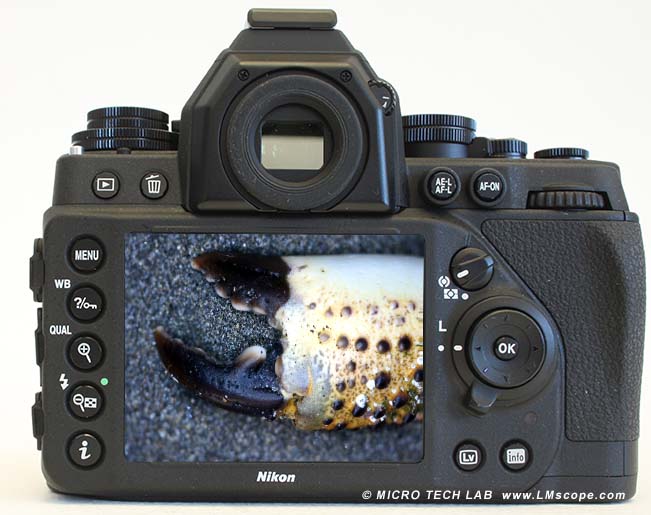
The construction of the Nikon Df is similar to that of the old analogue Nikon SLR cameras. The adjustment dials for exposure time and ISO sensitivity are mechanical and placed on the top of the camera, and the type of shooting mode and program are selected using a dial as well. In actual use, this proves to be extremely practical, as it is not necessary to surf through the menu for changes and the settings can be seen at a glance. The body itself is made of magnesium alloy, extensively coated with rubber and thus very robust. At 765 grams (body only) the weight is on the light side.
The Nikon Df is very handsomely made, and is certainly of a considerably higher quality than the Nikon D6100 or D800 models.
Unfortunately, the camera does not have a rotatable or pivoting screen; in this respect, Nikon has stuck completely to the design of its professional cameras (neither the Nikon D4 nor the D800 have a rotatable display either). The display itself, however, is very good, but not touch-sensitive. With the Nikon Df, the focus has been placed on the fundamentals of photography, and the bells and whistles have been foregone. The camera is clearly designed for ambitious photographers who already have some experience under their belt.
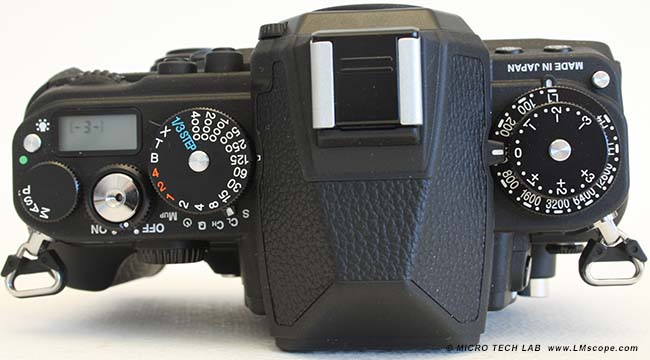
The full frame sensor is the same as in the Nikon D4 (16.2 megapixels). ISO sensitivity can be automatically adjusted from 100 to 12,800; in manual mode, ISO can be expanded from 50 to 204,800. The colour depth is 42 bits.
Once we started using it, we quickly established that only the look is “retro”, but not the internal workings of the camera. Like any other Nikon DSLR, it can be controlled from a PC using the Nikon Camera Control 2 software. For use in microscopy, this is essential, as this is the only way to achieve satisfactory image quality: controlling the camera remotely eliminates camera shake caused by touching the camera.
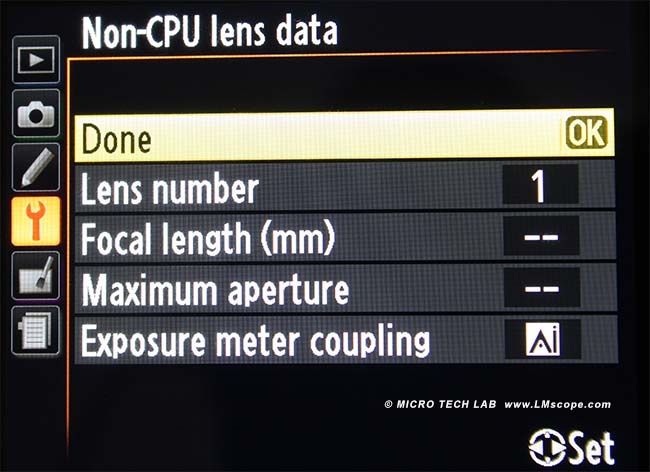
The camera also works very well without a CPU lens; this allows it to be used on microscopes, macroscopes, telescopes and also with old analogue lenses.
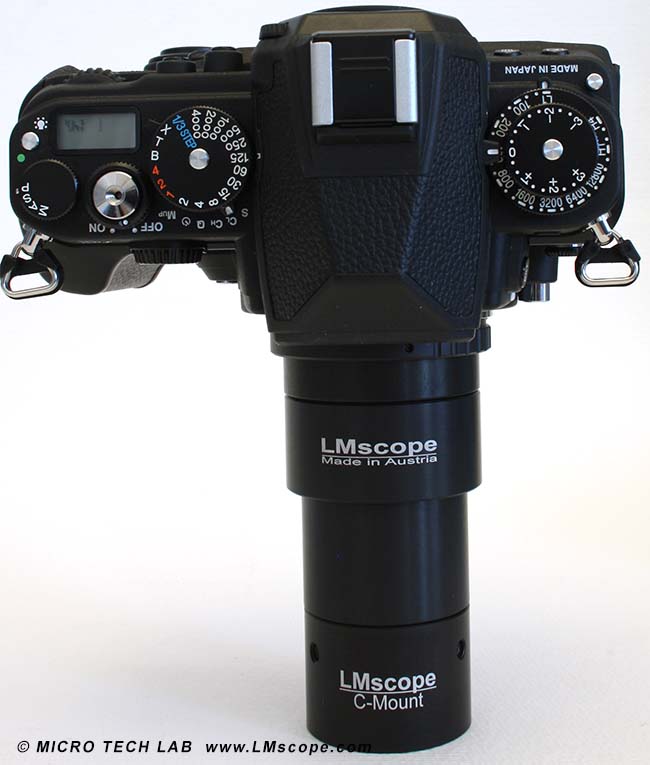
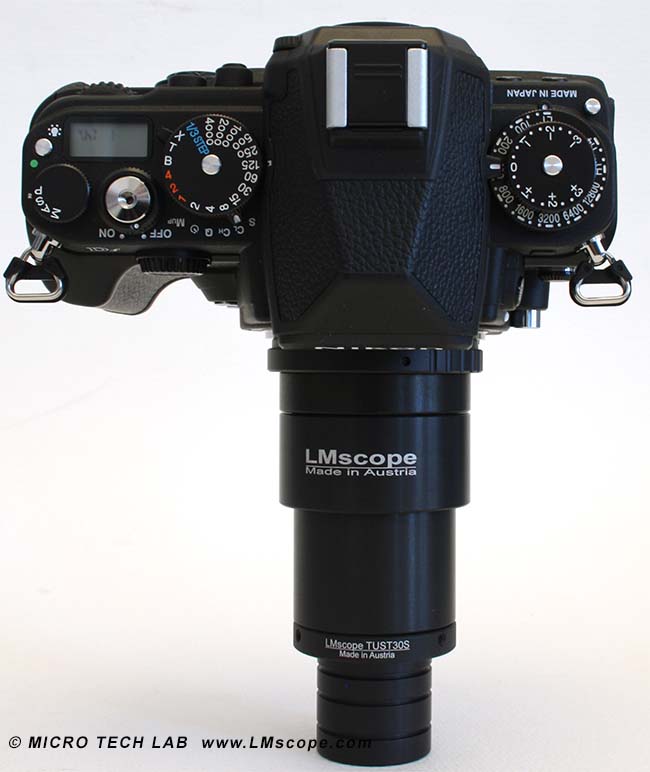
With the LM digital microscope adapters, the Nikon Df can be mounted to all conventional microscopes. We offer solutions for both eyepiece tubes and phototubes.
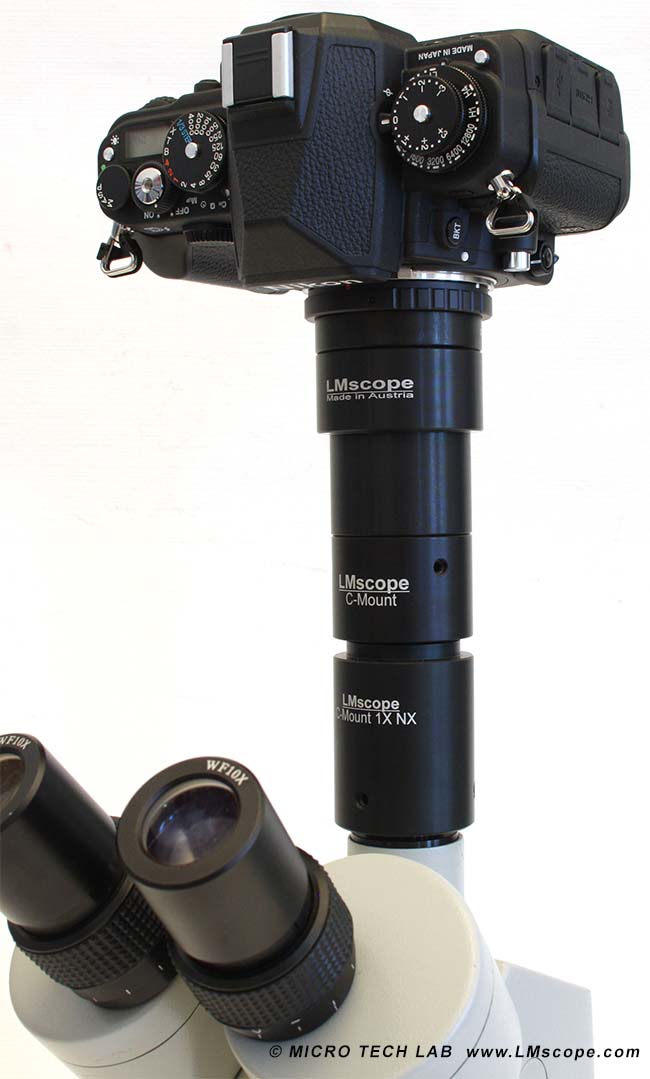
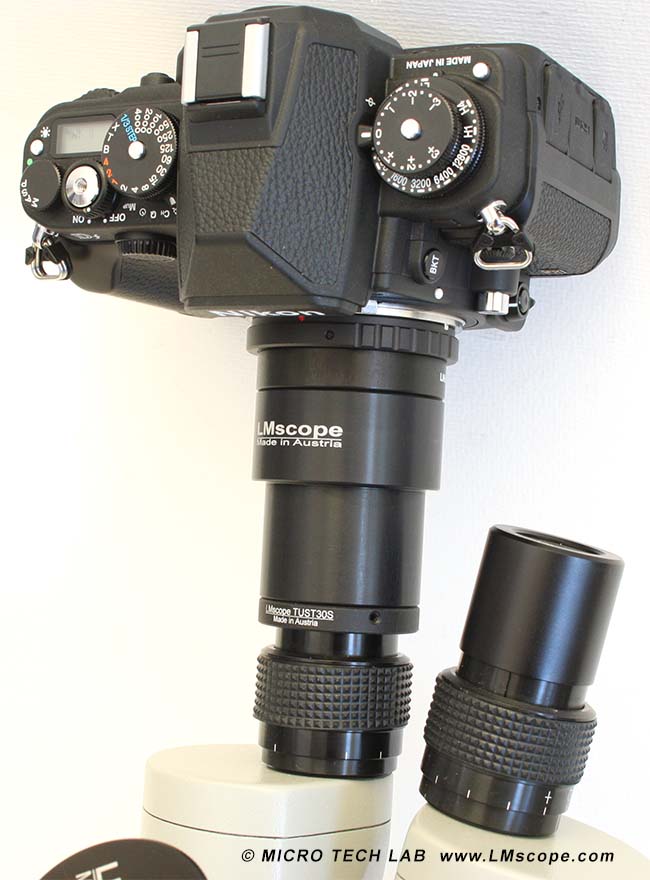
We recommend working in aperture priority auto mode.
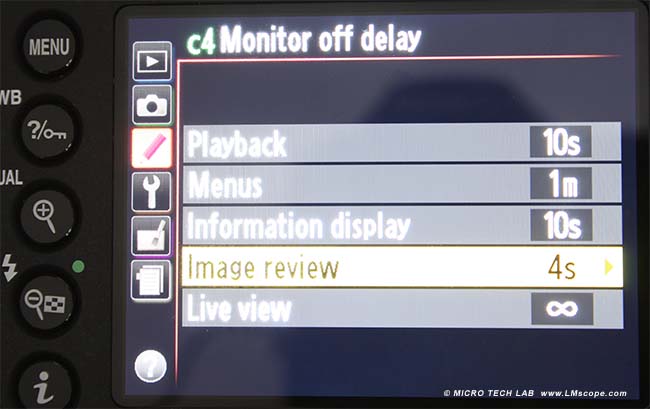
If you work in Live View mode, then attention should be paid to ensuring that the mirror is always folded up. This means that when the image is captured, only the shutter is activated. The MUP/Q mode should not be used, as the movements of the mirror cause motions that can lead to shaking and blurring of the images.
Live image output is possible via the HDMI port, including photo information. The HDMI port makes it possible to achieve an uncompressed output (better image quality) of the data for external recording devices.
It is not possible to record HD videos at all.
Conclusion:
The Nikon Df is extremely well built and offers a multitude of tweaking options. It has clearly been designed as a counterbalance to the touchscreen generation of cameras. For experts, it is easy to use, as the operating controls are very clear, and beginners will likewise be happy with this camera and will get on with it very well. Although the camera concentrates on the basics, all of the automatic functions work well. Both the full frame sensor and the display are excellent. Apart from the fact that it is not possible to record HD videos, the Nikon Df is very well suited for use in microscopy. With a hefty price tag of € 2,999 it is, however, probably only a genuine alternative for real enthusiasts.
19.03.2014
New LM Digital Adapter for: Nikon Z8 / Nikon D6 / Nikon Z6 / Nikon Z6II / Nikon Z7 / Nikon Z7II / Nikon Z5 / Nikon Z50 / Nikon Z30 / Nikon Z fc / Nikon D850 / Nikon D780 / Nikon D5 / Nikon D4s / Nikon D4 / Nikon D750 / Nikon D500 / Nikon D810 / Nikon D800 / Nikon D800E /